Creating a proposal might seem daunting, especially if you are creating it for the first time or if the project holds special significance. This mix of excitement and nervousness is natural, but writing an excellent proposal doesn’t have to be overwhelming. Our goal is to simplify the process by walking you through the essential steps, one by one.
In the evolving world of contracting, businesses constantly seek new ways to succeed. Artificial Intelligence (AI) offers a transformative path for proposal writing. AI redefines how proposals are created and managed, providing numerous opportunities for individuals and organizations.
The proposal field is fiercely competitive, and using AI can be like wielding a sharper sword in a duel—it gives you a significant edge. Despite the hype around AI, only 34% of teams have used generative AI in their RFP response processes, meaning early adopters have a unique advantage.
In 2024, AI tools are impacting all types of content writing, from marketing campaigns to magazine articles. So, it’s a surprise that interest in AI for proposal writing is growing. Explore our complete blog post to learn how professionals are using AI in their proposal writing and how you can improve your proposals using AI. Let’s on!
What is a Proposal?
A proposal is a written document that outlines all the key details of a project you want to undertake. Your proposal should clearly describe the project and the steps you’ll take to complete it. It’s designed to persuade stakeholders to support and get involved in your project.
Unlike a formal project contract, which is an agreement to complete a project, a proposal communicates your plan and approach. Key elements of a proposal typically include the project, timeline, budget, and objectives, helping stakeholders understand and buy into your vision.
Advantages of Using AI for Proposal Writing
AI is rapidly becoming essential for proposal teams seeking efficiency and a competitive edge. While it’s effective when used alongside humans, its benefits are undeniable. In this section, we’ll explore the key advantages AI brings to proposal writing, helping you create winning proposals and align your workflow. Keep reading!
1. Increases Efficiency and Time Saving
Using AI can drastically enhance the proposal writing process. You can quickly generate all proposal content, significantly reducing the time and effort involved. This efficiency allows you to focus more on strategy and fine-tuning to meet specific client needs.
By handling tedious, repetitive tasks, AI frees up your team to work on high-impact activities. This means more time for creating compliant, relevant, and personalized content that engages busy decision-makers. The result is a faster turnaround, enabling you to submit more proposals and increase your chances of winning new business.
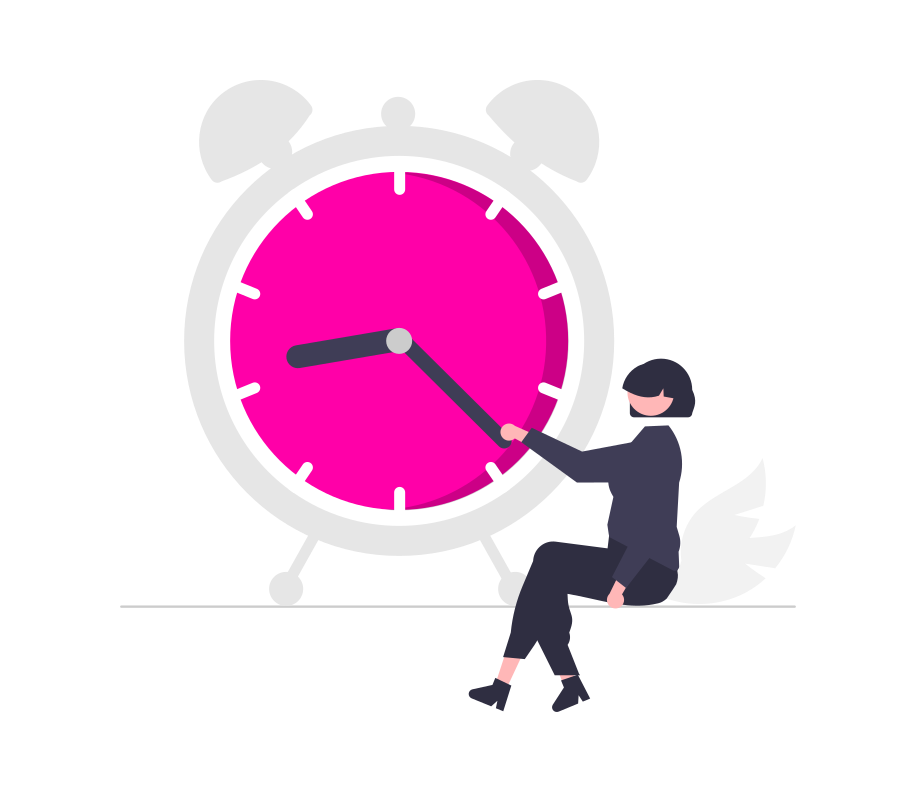
2. Improves Accuracy and Consistency
Accuracy and consistency are crucial in creating professional proposals, and AI excels in this area. With AI, you can reduce human errors like typos, grammatical mistakes, and inconsistencies. It ensures every section of your proposal is polished and cohesive.
This attention to detail reflects positively on your business, showing a high level of professionalism and reliability. By maintaining consistent language and formatting throughout your proposals, you enhance your brand image and make it easier for evaluators to read and understand your message.
3. Enhances Proposal Structure
A well-structured proposal is key to capturing attention and clearly conveying your message. AI can help you organize your proposal in a logical and effective manner, ensuring all necessary sections are included and flow smoothly. This not only makes your proposal easier to read but also helps highlight the most important information.
With AI’s assistance, you can ensure that your proposal follows best practices and industry standards, giving you a competitive edge. A clear, concise, and well-organized proposal is more likely to impress evaluators and increase your chances of success.
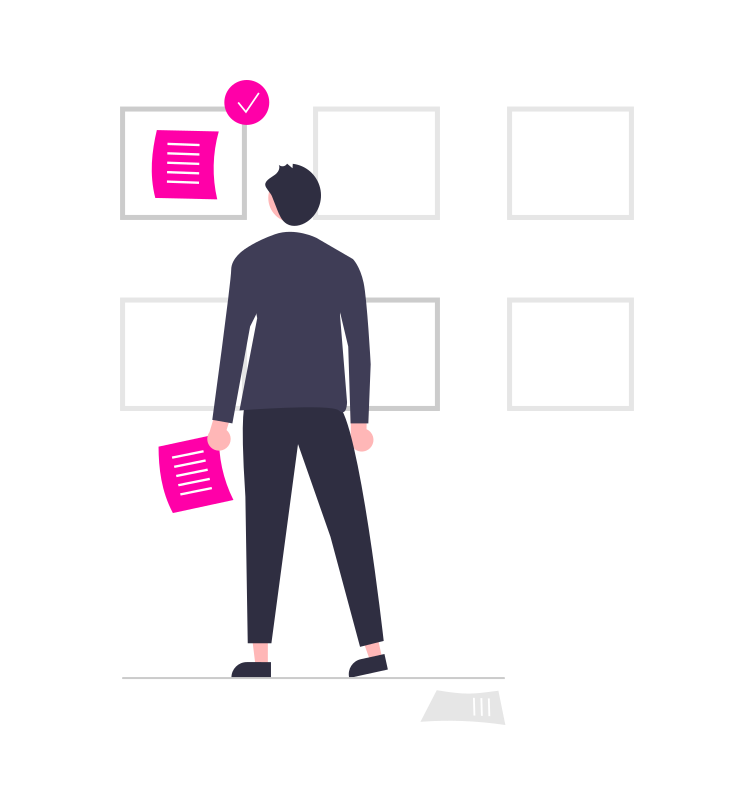
4. Offers Data-Driven Insights
AI tools can provide valuable data-driven insights by analyzing past proposal success rates and identifying effective keywords, phrases, and strategies. You can tailor your new proposals based on these insights, significantly improving your chances of winning contracts.
AI can also adapt to the unique requirements of each contract opportunity, helping you create highly customized proposals that stand out. By using data and AI’s analytical capabilities, you can optimize your proposal content for better results. This makes your submissions more relevant and compelling to the decision-makers.
How Proposal Professionals are Leveraging AI
Curious about how proposal professionals are putting AI into action? While nearly half feel optimistic about its potential, it’s essential to understand how early adopters are using this technology in practice. In this section, we’ll learn how proposal professionals use AI for tasks like summarizing, writing, customizing, and editing. Let’s discuss the practical applications of AI in the world of proposal writing. Read on!
1. Information Summarization
Condensing large blocks of text can be overwhelming, especially when you’re working with multiple proposal writing. Summarizing information quickly and effectively becomes a breeze with AI. You can use it to condense executive bios, highlight key points for executive summaries, or develop action items from proposal kickoff meetings.
This helps you present information concisely, making it easier to digest and understand. When you’re against tight deadlines, AI’s ability to summarize information swiftly ensures you can focus on the most critical aspects of your proposal without getting bogged down in details.
2. Quick Draft Generation
The first draft of a proposal can be created in no time with AI. You can quickly generate responses that align with RFP criteria as AI processes and interprets requirements swiftly. This means you spend less time staring at a blank page and more time refining and customizing the content.
By providing examples of how to respond, AI speeds up the initial drafting process. This rapid generation of a first draft allows you to focus on tailoring the proposal to meet the buyer’s specific needs, improving your chances of success.

3. Customizing Proposal Templates
Tailoring proposal templates to specific requirements is much easier with AI. You can adjust templates to fit the unique needs of each proposal, ensuring that your document is relevant and targeted. AI can help identify and incorporate the right keywords, phrases, and formatting styles that resonate with the client’s preferences.
This customization ensures your proposal stands out and meets the precise criteria set by the client. By using AI to customize templates, you enhance the relevance and impact of your proposals, making them more compelling and effective.
4. Competitive Analysis and Market Research
Understanding your competition and market is crucial for crafting successful proposals. AI can quickly sift through vast amounts of data, identify market trends, and analyze competitors’ strengths and weaknesses. This helps you gain valuable insights into buyer personas and preferences. Despite its potential, only a small percentage of teams currently use AI for this purpose.
By adopting AI for competitive research, you can gather insights that inform your strategic positioning and tailor your proposals to address the requirements of your client.
5. Proofreading and Editing
Proofreading and editing are essential for polished and professional proposals. You can rely on AI to act as a neutral proofreader, catching errors that you might miss after staring at the text for too long. AI can check for grammar and spelling mistakes, suggest better word choices, and ensure consistent tone throughout the document.
This consistency is key to maintaining a professional image. Also, AI can help tailor the tone and formality of your proposal writing to match the requirements of the RFP, making your responses more relevant and engaging. With AI handling these tasks, your proposals will be error-free and more likely to impress evaluators.
Steps for Crafting Proposals with AI
Creating a successful project proposal involves including key components essential for its success. Whether you’re responding to an external client’s request for proposals (RFP) or presenting to internal stakeholders, certain elements remain crucial.
These step-by-step instructions are applicable to most project proposals, providing a reliable outline to ensure you cover all necessary aspects. Join us in this section as we explore the essential steps for making AI proposals:
1. Draft an Executive Summary
The executive summary is your project proposal’s first impression, similar to an abstract of a report or the introduction of an essay. You need to capture the stakeholders’ opinions and persuade them to continue reading. In this section, briefly outline the problem your project aims to solve, the solution you propose, and the anticipated impact.
Keep it concise—just a paragraph or two, depending on the project’s complexity. This summary sets the stage for the detailed information that follows, offering a snapshot of your project and its importance. Remember, while this section should be engaging and informative, you will get into more details in the later sections of your proposal writing, so keep it focused and to the point.
2. Outline Project Background
Providing a clear project background is essential for setting the context of your proposal. If you’re responding to an RFP, you can paraphrase the background information provided to demonstrate your understanding of the project and motivations. This shows that you have grasped the reasons behind the project’s intention. If you’re creating a proposal without an RFP, research the company’s reasons and motivations by looking at similar projects they or others have undertaken.
This helps you understand the context and align your proposal accordingly. Use AI tools to summarize key points from any provided documents. Structuring this information clearly, perhaps using text blocks with headings, ensures that the stakeholders can easily follow the project’s background and relevance.

3. Detail Project Deliverables and Goals
Defining your project deliverables is crucial for a successful proposal. Stakeholders need to know what outcomes to expect from your project, such as a product, program, or technology upgrade. This section helps them understand exactly what their resources will produce.
When detailing your deliverables, include:
- The final product or objective of your project.
- A project timeline indicating when each deliverable will be ready.
- SMART goals (Specific, Measurable, Achievable, Relevant, Time-bound) aligned with your deliverables.
By clearly defining these elements, you make it easier for stakeholders to visualize the project and appreciate the value your project will bring. This clarity is essential for gaining their support and ensuring everyone is on the same page regarding what the project aims to achieve.
4. Develop a Project Plan and Budget
Creating a comprehensive project plan is essential. This plan should map out all phases of your project, from initial research to final deliverables.
To develop your project plan, consider:
- Different phases of the project will involve.
- Deliverables for each phase.
- Timeline for each phase.
For example, in an app development project, the conceptualization phase might include market research and idea validation, resulting in a summary report. The execution phase could involve front-end and back-end development and interface design.
Equally important is your budget. Break down the project costs by category and expense type. Whether the proposal is for a client or internal stakeholders, a clear budget is crucial. Ensure your budget is competitive but also fairly compensates your team. Highlight the expected return on investment, showing how the investment outweighs its costs.
Using a table to present your budget breakdown can help stakeholders easily understand the financial aspects of your proposal. This transparency can be a deciding factor in gaining approval and support for your project.
5. Set Project Timeline
Creating a timeline for your project is essential for keeping everything on track. You need to show when the project starts and ends and when each deliverable will be completed. A calendar view works well, but you might also use a Gantt chart if the project has many dependencies. Clearly outline key dates, including milestones and deadlines for deliverables.
This helps everyone understand the projects and keeps all team members aligned. Make sure to pull in the deliverable dates from your project plan and include feedback periods to ensure timely progress. By laying out a clear timeline, you make it easier to manage expectations and keep the project on schedule.
6. Review and Finalize
Once your proposal is complete, take the time to review and finalize it. You can also use AI to quickly proofread your document and check for consistency. AI will review each section to ensure everything is clear, concise, and error-free. Also, check that your project plan, budget, timeline, and deliverables are all aligned and accurately presented.
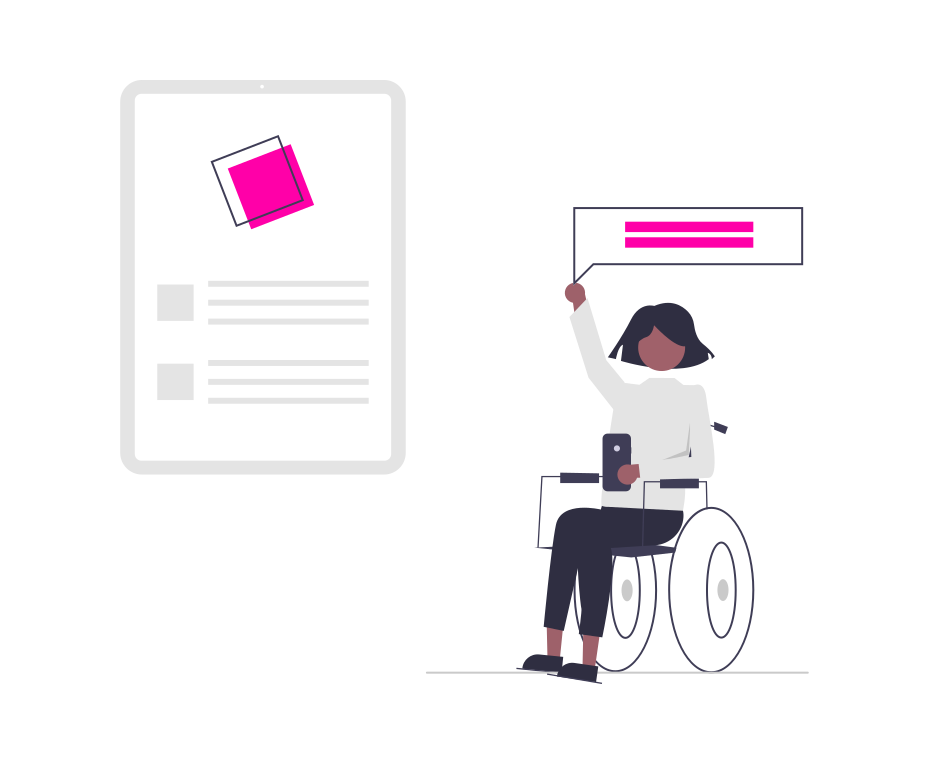
It’s important to ensure the tone and style are consistent throughout the document. You might also seek feedback from colleagues or use proofreading tools to catch any mistakes you might have missed. This final review is crucial to ensure your proposal is professional and polished. Once satisfied, you can finalize the document and prepare it for submission to stakeholders or clients.
Create and Manage Your Proposals Through Bit.ai
Creating proposals can be chaotic when using multiple AI tools for content creation, proofreading, and other tasks. Also, constantly copying and pasting responses into a separate document leads to disorganization and inefficiency. Here, Bit.ai acts as a comprehensive AI-powered document and wiki collaboration platform, making proposal writing, managing, and sharing smooth.
With Bit.ai, you can use its AI genius writer to create proposals, outlines, templates, and content. You can brainstorm and research directly within the platform, then rephrase, proofread, translate, and summarize your content as needed. The responses are autoformatted with appropriate headings, subheadings, bullet points, tables, and more whenever you press insert.
Using Bit.ai, you can not only create but also manage, collaborate, and share your proposals efficiently, making the entire process simplified and effective. Let’s explore some of its amazing features:
1. Smart Workspaces
Bit’s workspaces feature allows you to create unlimited workspaces for different teams, departments, projects, and clients. These workspaces are central hubs for all your documents, wikis, folders, media, and notes. This organization makes it easy to manage and access all your proposals and projects whenever needed, ensuring everything is in one place and easy to find.

2. Smart Interactive Documents
Make your proposals engaging and informative with Bit.ai’s interactive documents. You can add rich widgets like images, videos, charts, hints, tables, and code blocks. With integration to over 100 apps, your documents become powerful and multifunctional. This feature allows you to create proposals that are not only visually appealing but also interactive and comprehensive.
3. Real-Time Collaboration
Collaborate in real-time with your team using Bit.ai. Multiple collaborators can simultaneously edit and work on documents, with everyone seeing changes instantly. You can @mention team members for support, leave comments to discuss specific points, and receive instant notifications when mentioned. This makes teamwork effortless and ensures everyone is on the same page, improving the quality and efficiency of your proposals.

4. Convert to Wiki
Easily convert any document into a wiki by adding a subpage with Bit.ai. You can add unlimited subpages, rename them, nest them, and rearrange them using drag-and-drop to maintain your content hierarchy and structure. This feature helps create a well-organized knowledge base, making it easy to reference and manage information related to your proposals.
5. Smart Search
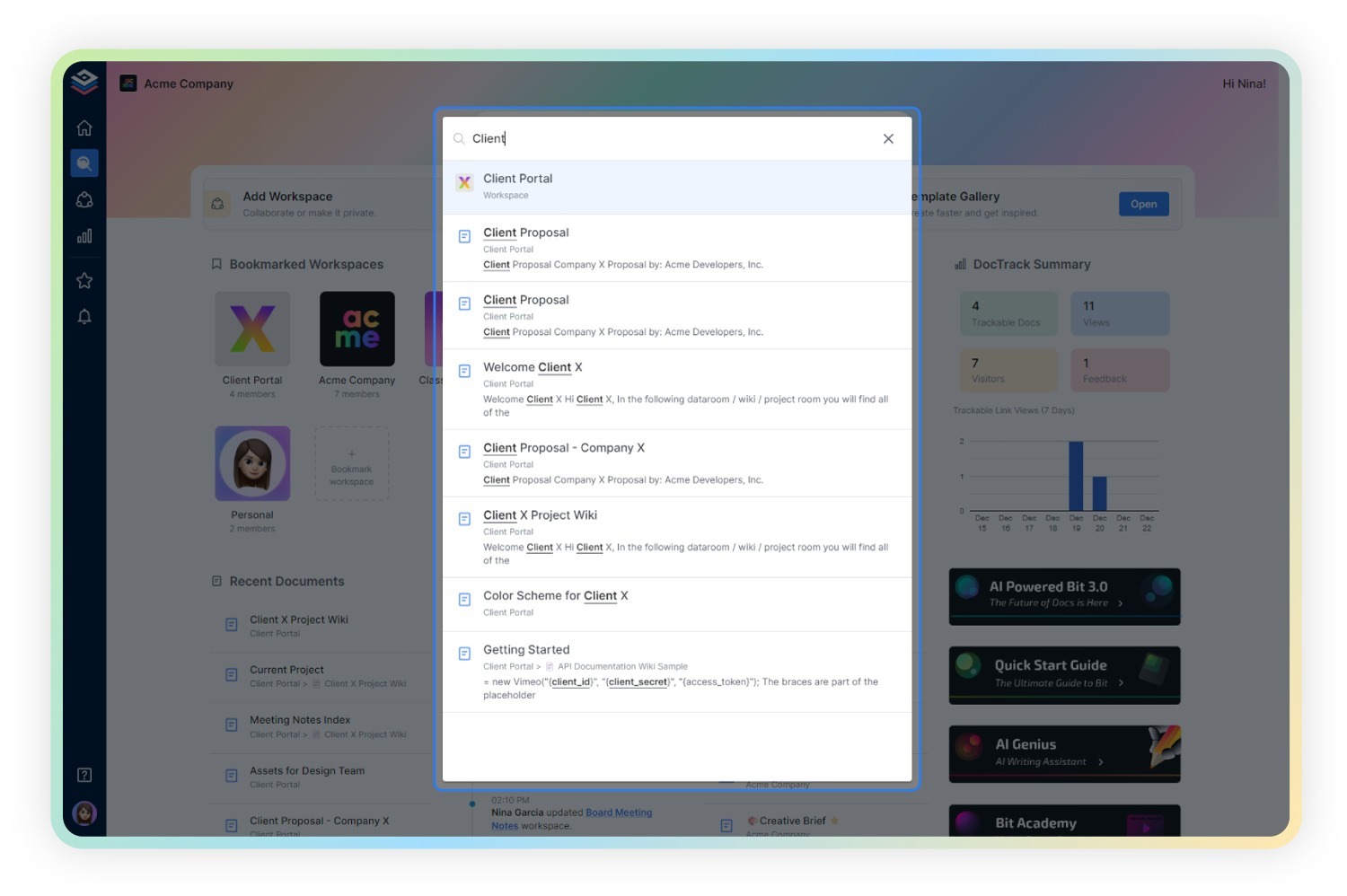
Finding information is simple and efficient with Bit.ai’s smart search. Just type in a keyword, and it searches through everything—workspaces, folders, document titles, and even content within documents. It’s It’s accurate, directing you right to the spot in the document where your keyword appears. This makes locating specific information within your proposals quick and easy.
6. Advanced Sharing
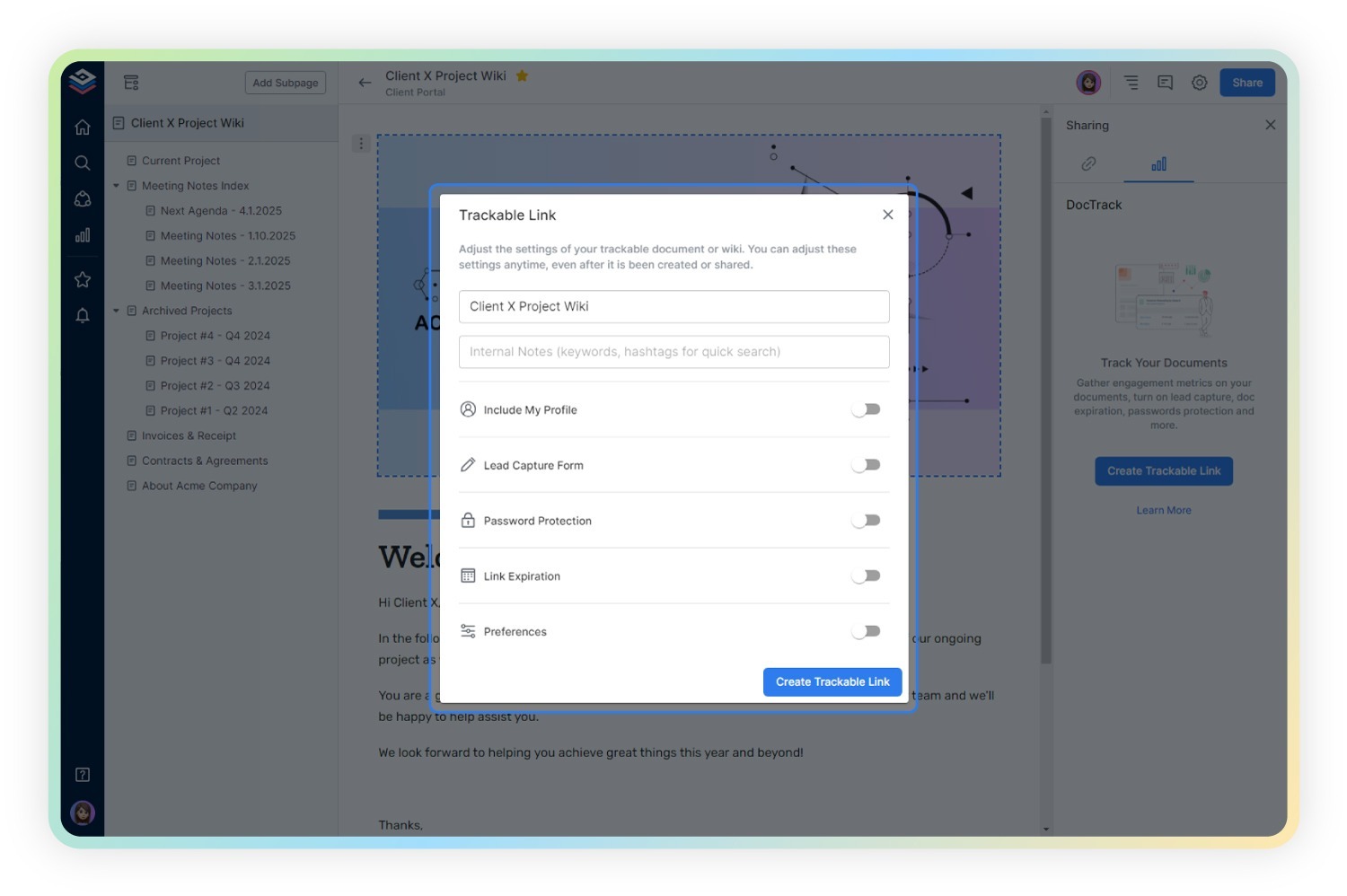
Bit.ai offers advanced sharing options, allowing you to share your proposals in various ways. You can send live links, embed documents on websites, or use trackable docs to see stats like visitors and views. You can also add lead capture forms and set passwords and expiration dates for added control. This feature ensures that your proposals are easily accessible to stakeholders and clients while also providing insights into engagement.
Conclusion
You’ve reached the end of our discussion on writing AI proposals. You’ve learned what a proposal is, the advantages of AI in proposal writing, how professionals use AI, and the steps to create an AI proposal. Now, it’s time to take action.
Use this blog as your guide to create standout proposals. Remember, the best results come from combining AI with human expertise. Always review your proposals for clarity, customize them for your audience, and utilize AI tools to save time and improve accuracy. Now, go on and turn your ideas into winning proposals!
Further Reads:
Contract Proposal: What is it & How to Create it?
Top 12 AI Assistants of 2024 for Maximized Potential!
Business Proposal: What is it & How to Write it? (Template Included)
Service Proposal: What is it & How to Create it?


